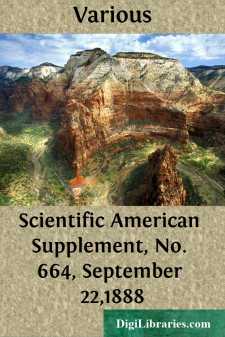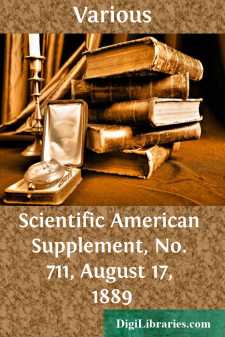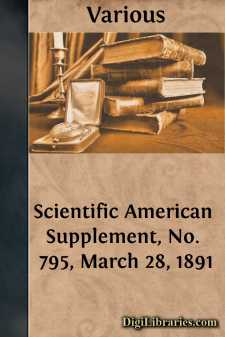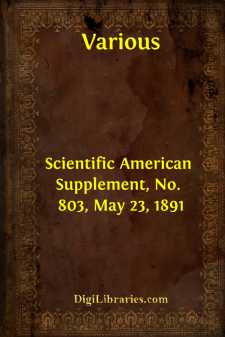Categories
- Antiques & Collectibles 13
- Architecture 36
- Art 48
- Bibles 22
- Biography & Autobiography 813
- Body, Mind & Spirit 142
- Business & Economics 28
- Children's Books 17
- Children's Fiction 14
- Computers 4
- Cooking 94
- Crafts & Hobbies 4
- Drama 346
- Education 46
- Family & Relationships 57
- Fiction 11829
- Games 19
- Gardening 17
- Health & Fitness 34
- History 1377
- House & Home 1
- Humor 147
- Juvenile Fiction 1873
- Juvenile Nonfiction 202
- Language Arts & Disciplines 88
- Law 16
- Literary Collections 686
- Literary Criticism 179
- Mathematics 13
- Medical 41
- Music 40
- Nature 179
- Non-Classifiable 1768
- Performing Arts 7
- Periodicals 1453
- Philosophy 64
- Photography 2
- Poetry 896
- Political Science 203
- Psychology 42
- Reference 154
- Religion 513
- Science 126
- Self-Help 84
- Social Science 81
- Sports & Recreation 34
- Study Aids 3
- Technology & Engineering 59
- Transportation 23
- Travel 463
- True Crime 29
Sort by:
by:
Various
MOLECULAR WEIGHTS. A new and most valuable method of determining the molecular weights of non-volatile as well as volatile substances has just been brought into prominence by Prof. Victor Meyer (Berichte, 1888, No. 3). The method itself was discovered by M. Raoult, and finally perfected by him in 1886, but up to the present has been but little utilized by chemists. It will be remembered that Prof....
more...
by:
Various
I have the honor this evening of addressing a few remarks to you upon the subject of influence machines, and the manner in which I propose to treat the subject is to state as shortly as possible, first, the historical portion, and afterward to point out the prominent characteristics of the later and the more commonly known machines. The diagrams upon the screen will assist the eye to the general form...
more...
by:
Various
GUN PRACTICE IN THE FRENCH NAVY. The gunners of the French fleet are possessed of a skill which is recognized by all the maritime powers, and these picked men proved this at the siege of Paris, where they made themselves illustrious, not only by their courage and their coolness, but also by the accuracy of their firing. Nothing is neglected, moreover, to keep up the precision of hand and eye that...
more...
by:
Various
TURPENTINE AND ITS PRODUCTS. By Edward Davies, F.C.S., F.I.C. In treating this subject it is necessary to limit it within comparatively narrow bounds, for bodies of the turpentine class are exceedingly numerous and not well understood. In this definite class turpentine means the exudation from various trees of the natural order Coniferæ, consisting of a hydrocarbon, CH, and a resin. The constitution...
more...
by:
Various
THE NAVAL FORGES AND STEEL WORKS AT ST. CHAMOND. With the idyls and historic or picturesque subjects that the Universal Exposition gives us the occasion to publish, we thought we would make a happy contrast by selecting a subject of a different kind, by presenting to our readers Mr. Layraud's fine picture, which represents the gigantic power hammer used at the St. Chamond Forges and Steel Works in...
more...
by:
Various
STEAM ENGINE VALVES. By THOMAS HAWLEY. In considering the slide valve in its simple form with or without lap, we find there are certain limitations to its use as a valve that would give the best results. The limitation of most importance is that its construction will not allow of the proper cut off to obtain all the benefits of expansion without hindering the perfect action of the valve in other...
more...
by:
Various
ELECTRICAL LABORATORY FOR BEGINNERS. By GEO. M. HOPKINS. It is only when theory and practice, study and experiment, go hand in hand that any true progress is made in the sciences. A head full of theory is of little value without practice, and although the student may apply himself with all his energies for years, his time will, to a great extent, have been spent in vain, unless he by experiment rivets...
more...
by:
Various
THE NEW LABOR EXCHANGE AT PARIS. NEW LABOR EXCHANGE, PARIS. There will soon be inaugurated (probably about the 14th of July) a new establishment that has long been demanded by the laboring population, that is to say, a new labor exchange, the buildings of which, situated on Chateau d'Eau Street, are to succeed the provisional exchange installed in the vicinity of Le Louvre Street. The new...
more...
by:
Various
THE NEW GERMAN DISPATCH BOAT METEOR. In time of war the dispatch boats are the eyes of the fleet. It is their duty to reconnoiter and ascertain the strength of the enemy and to carry the orders of the commander. For this service great speed is of the utmost importance. As all nations have increased the speed of their war ships during the last few years, it has become necessary to build faster dispatch...
more...
by:
Various
THE GREAT EQUATORIAL OF THE PARIS OBSERVATORY. The great instrument which has just completed the installation of our national observatory is constructed upon the same principle as the elbowed equatorial, 11 in. in diameter, established in 1882, according to the ingenious arrangement devised as long ago as 1872, by Mr. Loewy, assistant director of the Paris Observatory. We shall here recall the fact...
more...











